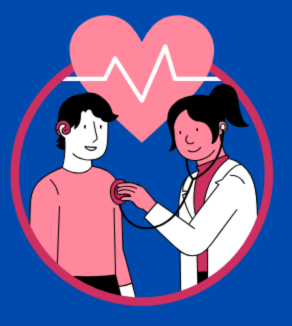Paracetamol belongs to the class of analgesics and antipyretic (An agent that reduces fever or body temperature). Paracetamol also known as acetaminophen, is widely used over the counter medication commonly used to relieve mild to moderate pain associated with conditions such as headaches, toothaches and stomach and muscle pain.
Brand name : Calpol, Crocin, Paracip, Dolo
Common side effects of Paracetamol 500mg:
Acetaminophen, the active component in Paracetamol, has certain side effects in addition to its intended ones. While not all of these side effects are likely to happen, if they do, they might require medical attention.
- bloody or cloudy urine
- fever with or without chills (not present before treatment and not caused by the condition being treated)
- pain in the lower back
- pinpoint red spots on the skin
- skin rash, hives, or itching
- sore throat
- sores, ulcers, or white spots on the lips or in the mouth
- sudden decrease in the amount of urine
- unusual tiredness or weakness
- yellow eyes or skin
How to Use Paracetamol Tablet :
- Tablet is taken by mouth as directed by your doctor or pharmacist.
- Read all direction carefully before use. If you have any query ask your doctor or pharmacist.
- You can take paracetamol every four to six hours. At least 4 hours should pass between doses.
- Never take more than the dosage that is advised. Examine the directions on the paracetamol product you now own. The recommended dosage and strength for various products containing paracetamol.
Route of administration :
Oral (by mouth), Suspension, Suppository, Intravenous
How paracetamol works :
Paracetamol functions as an antipyretic (reduces fever) and an analgesic (alleviates pain). According to FDA, the exact mechanism of action of acetaminophen is still unknown. According to one concept, acetaminophen raises the threshold for pain by blocking COX-1 and COX-2, two isoforms of cyclooxygenase that are involved in the synthesis of prostaglandins (PG). The chemicals known as prostaglandins are what cause sensations of pain. Acetaminophen has no peripheral anti-inflammatory benefits because it does not inhibit cyclooxygenase in peripheral tissues. Acetaminophen’s antipyretic effects are probably caused by direct impact on brain regions that regulate body temperature, leading to peripheral vasodilation, sweating, and heat loss.
Paracetamol toxicity :
Paracetamol (PCM) is widely available and It is widely prescribed and cheap to buy over-the-counter, making it a common drug taken in overdose. It is a very useful analgesic (alone or in combination) and also is an antipyretic. It is normally found as a 500 mg tablet, but it is often combined with other active ingredients in various preparations.
The maximum dose for PCM that is safe for most people is 4,000 milligrams (4 grams) in a 24-hour period. An overdose means taking more than 4 grams in a 24-hour period.
PCM overdose can be asymptomatic at first. There are common signs and symptoms for each stage of an overdose. If the overdose is treated right away, there may be fewer or easier symptoms in the later stages.
Planned Overdose Unplanned Overdose (accidental)
Common Causes include :
- Sometimes people take too much PCM on purpose to
harm themselves - Taking too much or for too many days in a row
- Taking more than one medicine at a time (all of which may
contain PCM ) - Taking extended release forms repeatedly (not knowing the difference between immediate release and extended release First 24 hours 24 to 72 hours after the overdose
72 to 96 hours after the overdose
Symptoms :
- Nausea (sick to your stomach),
- vomiting (throwing up),
- stomach pain,
- Loss of appetite
- Paleness
- Tiredness
- Sweating
- Pain in your upper right side
- Dark-colored urine
- Urinating less often than normal
- Skin and the whites of the eyes turn yellow
- Blood in your urine
- Fever, lightheaded, fainting
- Fast breathing, trouble breathing
- Extreme weakness or tiredness
- Feeling very hungry, shaking
- Blurred vision,
- Fast heartbeat,
- Headache that will not go away
- Trouble staying awake
- Confusion
- Coma (very deep sleep)
How paracetamol causes hepatoxicity ?
Damage to the liver or hepatotoxicity, results not from Paracetamol itself, but from one of its metabolites, N-acetyl-p-benzoquinoneimine (NAPQI). NAPQI depletes the liver’s natural antioxidant glutathione and directly damages cells in the liver, leading to liver failure. The patient is at high risk of liver damage
if:
- The patient is on long-term treatment with enzyme inducers e.g. carbamazepine, phenobarbital, phenytoin, primidone, rifampicin, etc.
- The patient regularly consumes alcohol in excess.
- The patient has pre-existing liver disease.
- The patient is likely to be glutathione-depleted, e.g. eating disorders, cystic fibrosis, HIV infection
